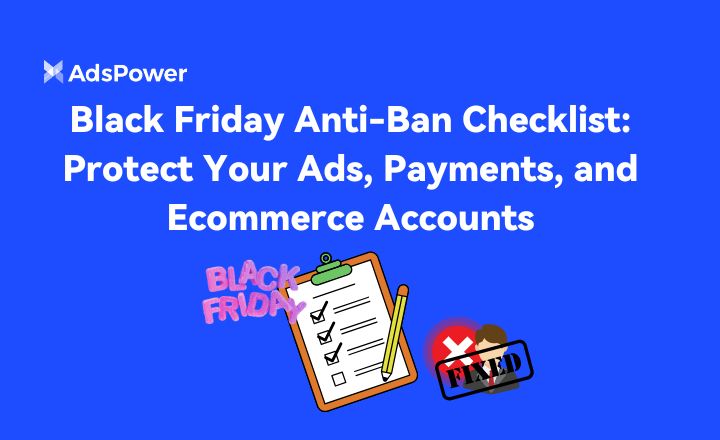The Pros and Cons of Scaling Your Shopify Business with Multiple Stores
According to Statista, the global ecommerce market is expected to hit a whopping $4.9 trillion in 2021! This growth is being driven by the increasing popularity of online shopping, especially in developing countries. As an entrepreneur or online retailer, you might be considering taking advantage of this trend by having multiple Shopify websites. It's a smart move that can help you expand your reach, diversify revenue streams, and enhance your branding opportunities. But before you dive in, it's crucial to understand both the pros and cons.
Why should you seize the opportunity of multi-store ecommerce?
Increased Reach and Targeting: Operating multiple ecommerce websites allows you to reach a wider audience and target specific customer segments. Shopify found that businesses with multiple online stores generate 16% more revenue than businesses with a single store. You can create unique designs, content, and marketing strategies for each website to meet their specific needs.
Enhanced Branding Opportunities: Each website can have its own unique design, content, and branding elements, allowing you to create a cohesive brand identity while catering to different target markets.
Improved SEO and Organic Traffic: Each website can focus on specific keywords and optimize its content accordingly, increasing the chances of ranking higher in search engine results pages. You can also build backlinks more effectively by creating interlinking opportunities between your websites.
Increased Product Visibility: Multiple ecommerce websites provide more visibility for your products. Customers can find what they are looking for quickly and explore different options within a particular product category. You can also cross-promote related products across different websites.
Dilemma You May Be Facing
Running multiple ecommerce websites on Shopify can offer numerous benefits, but it also comes with its fair share of challenges and disadvantages. In this section, we will explore some of the potential drawbacks of having multiple ecommerce websites and discuss considerations for managing them effectively.
SEO Challenges
Managing multiple websites can present challenges for search engine optimization (SEO). On average, it takes 10 months to rank a website on the first page of Google. Maintaining consistent branding and messaging across all sites can be difficult, and there is a risk of duplicate content and keyword cannibalization. Additionally, building backlinks and authority for multiple sites can be harder, which can negatively impact your overall SEO efforts.
Increased complexity and management requirements
Operating multiple ecommerce websites can be challenging due to increased complexity and management requirements. Each website requires regular updates, maintenance, and monitoring to perform well. This necessitates dedicating additional time and resources to manage multiple platforms simultaneously.
Managing multiple websites is especially difficult for small business owners or entrepreneurs with limited resources. It requires a deep understanding of each website's unique needs, including design, content creation, inventory management, customer support, and marketing strategies. Failing to allocate enough time and resources to each website can negatively impact their performance and hinder overall business growth.
Advertiser Accounts Suspension
If you have multiple ecommerce websites targeting different countries, you may need to create multiple Google Ads accounts to target each region effectively. However, Google may request advertiser verification for each account, which can be time-consuming and require additional resources. In the case of having only one company, you may wonder if you can submit the same incorporation document for multiple accounts. While this may be possible, there is a risk of suspension for circumventing the system.
What's the Way Out?
Managing multiple ecommerce websites requires careful planning and execution. Here are the key considerations to keep in mind:
Ensure consistent branding and user experience
Maintain consistent branding across all websites to create a cohesive brand identity. This includes using consistent logos, color schemes, fonts, and messaging. Provide a seamless user experience across all websites by ensuring that navigation menus, search functionality, and checkout processes are similar.
Allocate resources effectively
Determine which websites require more attention or resources based on their performance or strategic importance. Allocate more marketing budget to websites with higher potential or dedicate additional staff members to manage specific sites. Balance resources across websites to ensure optimal results.
Use tools to make your multi-store business even better
Let's say you have three ecommerce websites: one for shoes, one for clothes, and one for electronics. You want to use a project management tool to track your progress and stay organized. You can create three separate projects in the project management tool, one for each website.
To better manage multiple ecommerce websites, you can also use project management tools like Trello, Asana or their alternatives. By creating separate projects for each website and assigning tasks for activities like updating content, managing inventory, and tracking sales, you can stay organized and on track. Additionally, using an antidetect browser like AdsPower can help protect your privacy and prevent websites from tracking you while you manage your ecommerce websites.
Using an antidetect browser can also make managing multiple ecommerce websites a breeze. It allows you to log in to each website from a different IP address, change your browser fingerprint, and encrypt your traffic. This way, you can fly under the radar of fraud detection systems, shield your identity, and access websites that are blocked in your region. When you combine an antidetect browser with a project management tool, you can streamline your workflow and maximize your productivity.
Deciding If Multiple Shopify Stores Are Right for You
To sum it up, while there are clear benefits to operating multiple ecommerce websites on Shopify, it is crucial for businesses to carefully evaluate their needs and available resources before deciding to pursue this strategy. Take a good look at the pros and cons, and make sure you have the resources to handle the extra work. Ultimately, the decision should be based on what will best serve the business's long-term growth and success in the competitive ecommerce landscape. Wishing you the best of luck with all your endeavors!

People Also Read
- How to Switch Accounts on Chrome (Mobile & Desktop)

How to Switch Accounts on Chrome (Mobile & Desktop)
Learn how to switch accounts on Chrome for desktop and mobile. Avoid data mix-ups, manage multiple Google accounts safely, and use profiles for separa
- Black Friday Anti-Ban Checklist: Protect Your Ads, Payments, and Ecommerce Accounts

Black Friday Anti-Ban Checklist: Protect Your Ads, Payments, and Ecommerce Accounts
Protect your ads, payment gateways, and ecommerce accounts this Black Friday with a proven anti-ban checklist and AdsPower strategies to avoid flags
- The Solo Marketer's Black Friday Superpower: Scaling Like an Agency with AdsPower

The Solo Marketer's Black Friday Superpower: Scaling Like an Agency with AdsPower
Solo marketer for Black Friday? Learn how to scale your ads, safely manage multiple Facebook & TikTok accounts, and automate tasks with AdsPower.
- Play Roblox Without VPN: Safe and Easy Ways to Access Roblox

Play Roblox Without VPN: Safe and Easy Ways to Access Roblox
Discover how to play Roblox without a VPN in 2025 safely and easily. Learn working methods, safe practices, and tips to enjoy Roblox anywhere.
- How Can I Make Money on Fiverr? (Beginner’s Guide to Earning Online)

How Can I Make Money on Fiverr? (Beginner’s Guide to Earning Online)
Learn how to make money on Fiverr in 2025 with this beginner’s guide. Discover top niches, expert tips, and how to scale your freelancing business


